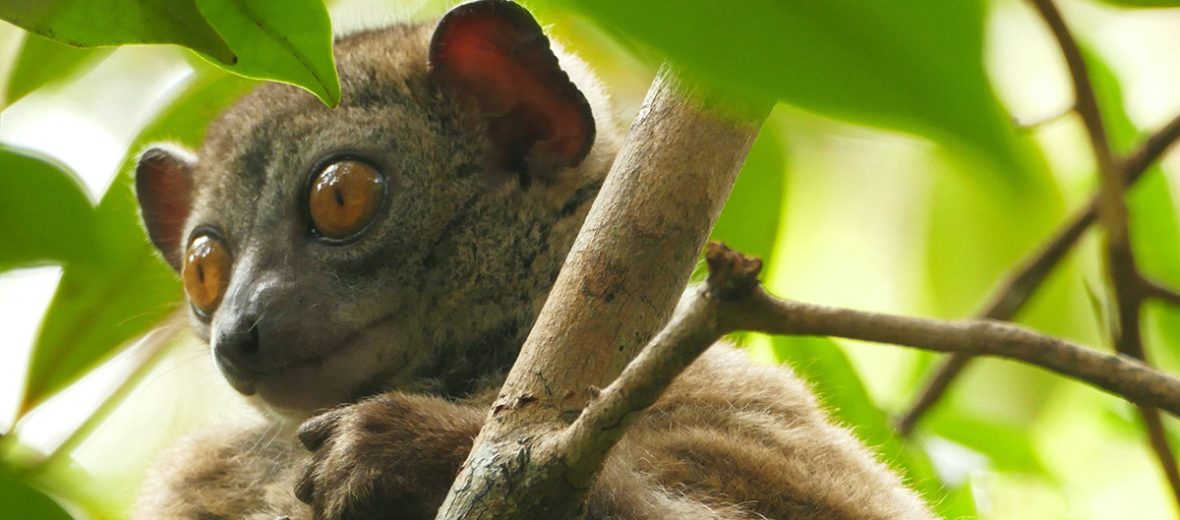
The sahafary sportive lemur, aka northern weasel lemur, hails only from the far north of Madagascar, from the Mahavay River and Vohemar, to Montagne d’Ambre. They prefer wet evergreen forests and dry deciduous forests. Sadly, these critters are faced with the threats of habitat destruction due to the logging industry and are subject to hunting and trapping, for bush meat. As a result, these creatures are listed as Critically Endangered and Critically Depleted by the IUCN. There are but an estimated 40+ wild individuals left, to date.
First the Stats…
Scientific name: Lepilemur septentrionalis
Weight: Up to 1.7 lbs.
Length: Up to 11 inches, plus up to a 10 inch tail
Lifespan: Up to 15 years
Now on to the Facts!
1.) Sahafary lemurs are nocturnal (active at night).
2.) These lemurs are arboreal (spend their lives in trees).
3.) It is presumed that these critters are caecotrophic (ingest their own feces in order to gain as much nutrition as possible from the food they consume). Certain rodents do this too, like guinea pigs and rabbits.
4.) Males are typically very territorial and solitary.
5.) The males announce their territory via vocalizations and if breeding males come into contact with each other, a fight will break out.
But wait, there’s more on the sahafary sportive lemur!
6.) Their vocalizations consist of both a loud alert call and a contact rejection sound.
7.) Their diet consists of various leaves and is supplemented by flowers and fruit.
Did you know…?
They get their common name from the a boxer-like stance they take when faced with a threat.
8.) Sahafary sportive lemurs are polygynous (1 male mates with multiple females).
9.) Breeding season lasts from April – August.
10.) Females undergo up to a 150 day gestation (pregnancy) that yields just a single infant.
But wait, there’s still more on the sahafary sportive lemur!
11.) Although not common, a group of these lemurs is called a troop or conspiracy.
12.) Being highly intelligent, lemurs are capable of utilizing tools as well as performing basic mathematics tasks.
13.) Even though wild animals belong in the wild and not in zoos, lemurs tend to thrive in a captive zoological environment.
14.) The word lemur hails from the Latin “Lemures,” and translates to “spirits of the night” or “haunter.”
Now a Short Sahafary Sportive Lemur Video!
Be sure to share & comment below! Also, check out the Critter Science YouTube channel. Videos added regularly!
Want to suggest a critter for me to write about? Let me know here.



